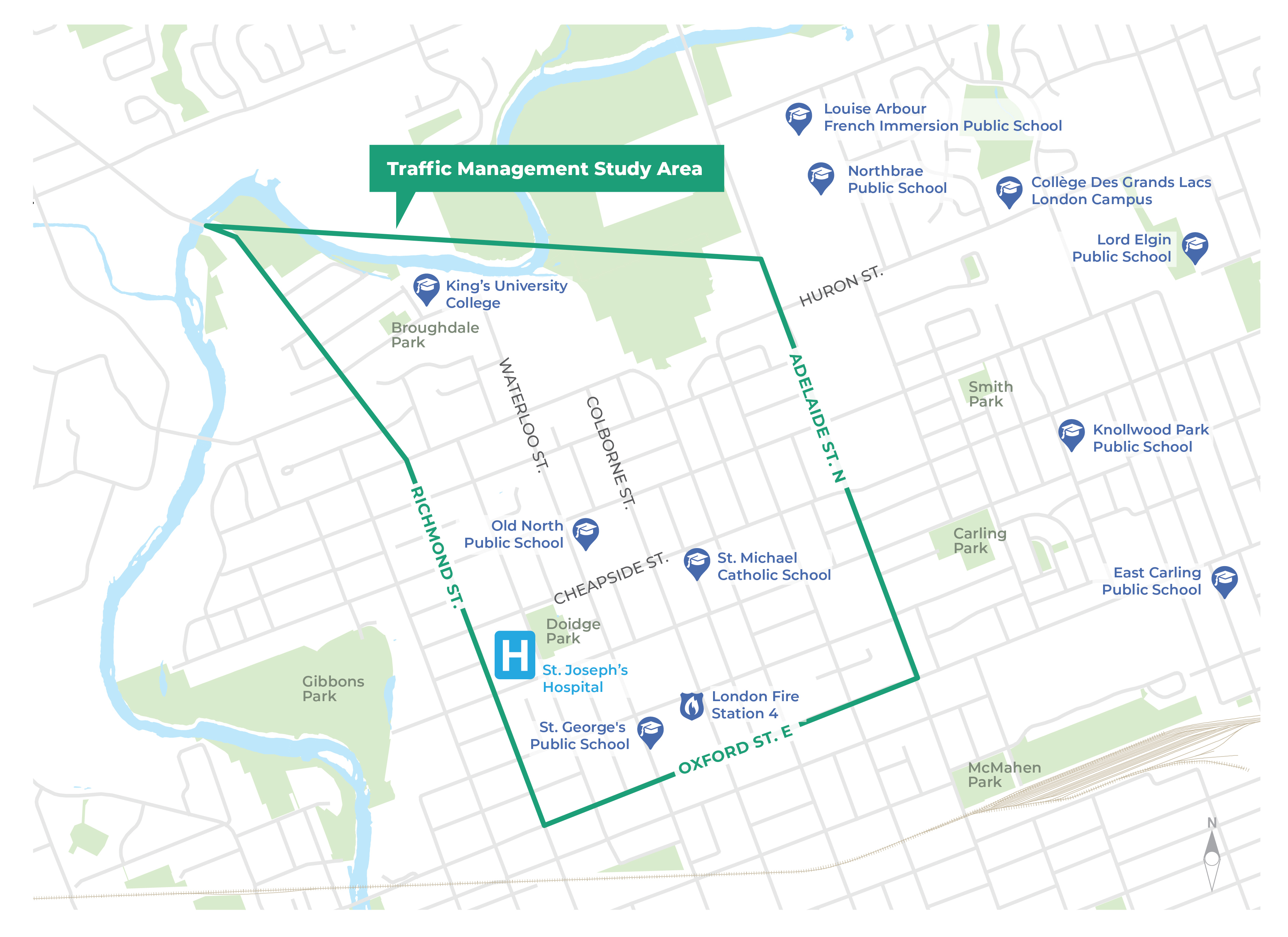Central North London Traffic Study
The City is conducting a traffic management study in Central North London to respond to community concerns about traffic safety, speeding, and cut-through traffic.
The goal is to make local streets safer and more comfortable for everyone, especially families, pedestrians, and cyclists, by identifying problem areas and developing practical, long-term solutions.
Why the study is happening
During a town hall meeting on July 23 organized by Councillor Trosow, residents shared concerns about speeding drivers, high traffic volumes, and unsafe conditions for people walking or cycling.
Following that meeting, and after receiving additional feedback from the community, the City has initiated a formal study to look holistic look at the area and create a plan to improve safety for all road users.
To help with this work, the City has hired a qualified traffic consulting firm, CIMA, to collect and analyze data, assess existing conditions, and recommend effective traffic calming measures, in consultation with the community and other interested parties and public in the area.
Study area
The study area is bounded by Richmond Street (west), Oxford Street (south), the Thames River (north), and Adelaide Street (east).

What the study will accomplish
The study will take a data-driven and community-informed approach to improving traffic safety in Central North London. It will:
- Assess current traffic patterns, including speeding, cut-through traffic, and other safety concerns.
- Identify key areas of concern, particularly around schools, parks, and pedestrian routes.
- Explore and evaluate traffic calming options such as speed cushions/humps, curb extensions, or signage improvements, etc.
- Develop a neighbourhood-wide traffic calming plan with recommendations that balance safety, accessibility, and mobility for all road users.
- Engage with residents to ensure solutions reflect community safety.
Next steps
The City will continue to update residents as the study moves forward and provide opportunities for public input before any recommendations are finalized. Please subscribe for email updates on this webpage and we will share updates about community meetings and new feedback opportunities as the study progresses.
